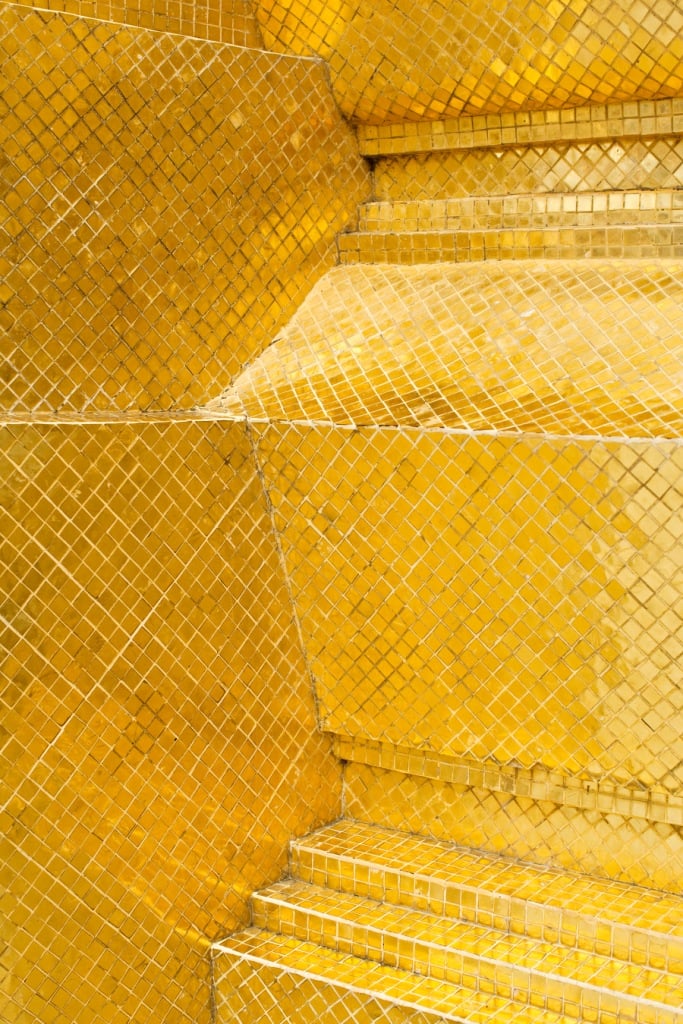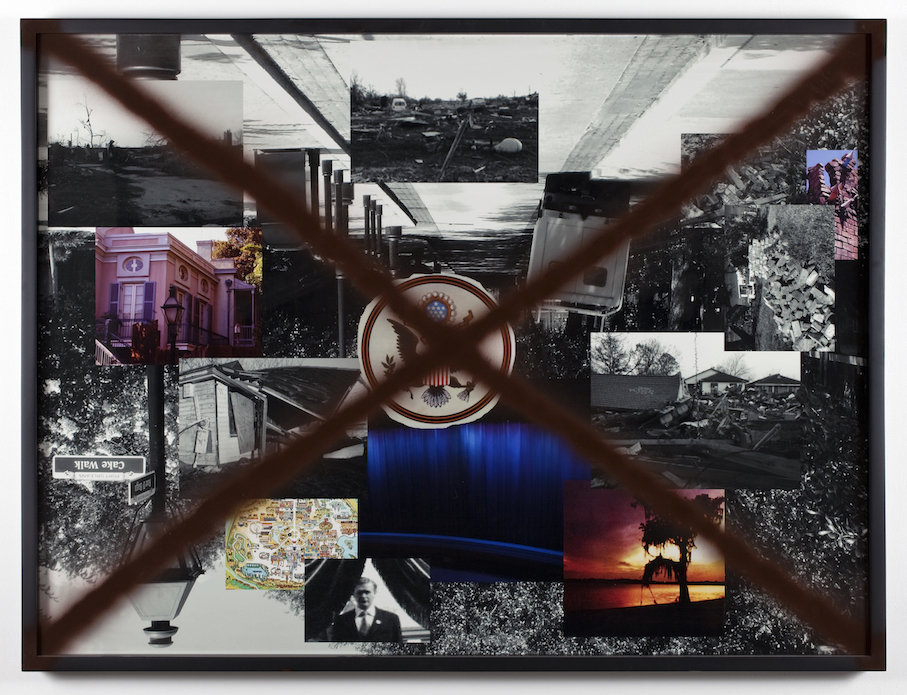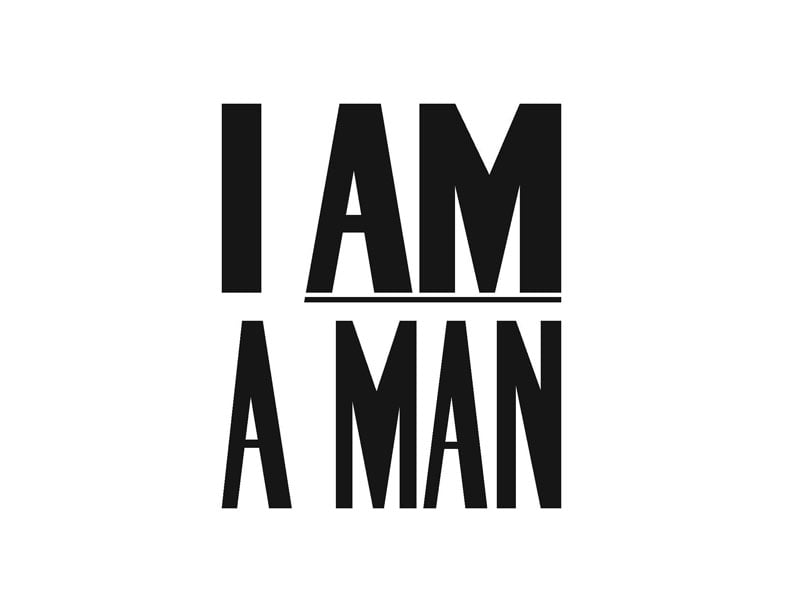I Am A Man
2013 - Painting (Painting)
Hank Willis Thomas
The image is borrowed from protests during Civil Rights where African Americans in the south would carry signs with the same message to assert their rights against segregation and racism. Historically, in countries such as the US and South Africa, the term “boy” was used as a pejorative and racist insult towards men of color, slaves in particular, signifying their alleged subservient status as being less than men. In response, Am I Not A Man And A Brother? became a catchphrase used by British and American abolitionists. The question “Am I Not A Man?” was brought up again during the Dred Scott decision of the U. S. Supreme Court in 1857. More recently, “I Am a Man” and also “I Am Not a Man” has been used as a title for books, plays and in film to assert the rights of all people to be treated with dignity, from African Americans to Feminists. Signs were even used in Arabic language translated to Ana Rajul during the Arab Spring. For this painting, the artist was specifically inspired by a particular photograph from the 1968 Memphis Sanitation Strike, where a large group of black men assembled with protest posters bearing the same message and nearly identical typeface. The artist has also created many other version of this painting that play with the orientation and wording of the text (ie: A Man I Am, I Be a Man, I Am Many, I Am The Man, etc.), reflecting historically on the variations that have been used before, and speculating on how they may continue in the future. Of this series the artist recalls:“I was born in 1976, and I was amazed that just eight years before I was born it was necessary for people to hold up signs affirming their humanity. The phrase that I grew up with was “I am the man,” which is also influenced by African-American culture but takes a very different starting point. What I was interested in was, how many other ways could I read that phrase?… In the U. S. Constitution, blacks were considered three-fifths of a man. Then there was the slogan adopted by the Quakers, “Am I not a man and a brother?” There are a lot of other references, like “Ain’t I a Woman?” is a reference to Sojourner Truth’s famous speech, but also the Women’s Liberation movement. The final painting in the group says “I am. Amen.” The greatest revelation should be that we are.”
Employing the visual language and terminology of mass media, and appropriating symbols and images from popular culture, Hank Willis Thomas’ work seeks to question and subvert established definitions and positions with regards to personal identity and the narrative of race. Working across installation, photography, video, and media work, Thomas maintains his photo conceptualist roots, primarily taking source material from found photographs and archives. These images form the basis from which the artist seeks to uncover the fallacies that history claims as truth. His work illustrates how the way history is represented and consumed reinforces generalizations surrounding identity, gender, race and ethnicity, and that as an artist he has an opportunity to expose or to revise those histories from the points of view of the oppressed.
Colors:
Related works from the » 2010's created around » New York, New York

© » KADIST
Chris Wiley
2012Architectural details become abstracted renderings in Chris Wiley’s inkjet prints 11 and 20 (both 2012)...

© » KADIST
Oded Hirsch
2012Oded Hirsch’s video work Nothing New (2012) utilizes seemingly absurdist tropes to raise more trenchant questions about communal action and collective identity in modern day Israel...

© » KADIST
Valeska Soares
2012Relying on repetition and repurposed materials, Soares works to interrogate time—its measurement, its passing, and its meaning...

© » KADIST
Stephen G. Rhodes
2010For his series of digital collages Excerpt (Sealed)… Rhodes appropriated multiple images from mass media and then sprayed an X on top of their glass and frame...

© » KADIST
Juliana Huxtable
2017Herculine’s Prophecy by Juliana Huxtable features a kneeling demon-figure on what appears to be a screen-print, placed on a wooden table, which has then been photographed and digitally altered to appear like a book cover, with a title and subtitle across the top, and a poem written across the bottom...

© » KADIST
Shahzia Sikander
2010The Last Post was inspired by Sikander’s ongoing interest in the colonial history of the sub-continent and the British opium trade with China...

© » KADIST
Chris Wiley
2012Architectural details become abstracted renderings in Chris Wiley’s inkjet prints 11 and 20 (both 2012)...

© » KADIST
Xaviera Simmons
2019Xaviera Simmons often employs her own body and collected materials in the service of her photographs and performances...

© » KADIST
Yang Guangnan
2011Itch explores the relationship between technology and daily human experience with a motorized arm that extends from within the gallery’s wall, moving up and down while holding a projector that shows a desperately scratching pair of hands....

© » KADIST
An-My LE
2010The print Patient Admission, US Naval Hospital Ship Mercy, Vietnam (2010) features an Asian Buddhist monk and an American Navy Solider on board the Mercy ship –one of the two dedicated hospital ships of the United States Navy– sitting upright in their chairs and adopting the same posture...



